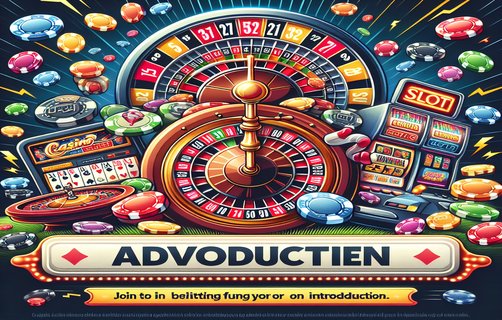Mastering the Art of Live Poker: A Comprehensive Guide to Psychology and Strategy
लाइव पोकर की कला: मनोविज्ञान और रणनीति का व्यापक गाइड
Live poker is not merely a game of chance; it's a complex interplay of psychology, strategy, and timing. Understanding the nuances of reading an opponent's psychology can often be the difference between winning and losing. As players engage in a high-stakes environment, their behaviors and reactions can offer invaluable insights into their hand strength and intentions.

Reading psychology in poker involves keen observation and interpretation of non-verbal cues. From body language to facial expressions, the subtle signs can indicate whether a player is bluffing or has a strong hand. The ability to discern these signals often comes from experience and intuition, sharpened through countless hours at the felt. An astute player will watch for tells: a nervous twitch, a lingering gaze, or a sudden change in breathing patterns can all signify critical information.
Complementing psychological tactics are wagering traps. Skilled players often employ traps to manipulate the betting pattern, creating opportunities for misdirection. By disguising the strength of their hand, they can entice opponents into overcommitting chips, leading to substantial pot wins or even inducing bluffs from unsuspecting players. The crafting of a wager is as much an art as it is a science, requiring an understanding of both the game's mathematical aspects and the human element at play.
Calculated stake analysis is crucial for successful betting strategies in live poker. This involves assessing the risk-to-reward ratio for every decision at the table. Players must consider the size of their stack, the pot odds, and their opponent's tendencies. Such analysis becomes particularly important in tournament settings where chip preservation is paramount. Players who understand the long-term implications of their betting decisions are more likely to thrive in the competitive landscape of poker.
Long-term focus results are the hallmark of successful players. Short-term victories and losses can cloud judgment, but those who maintain a strategic vision tend to come out ahead. By fostering a mindset of continuous improvement and employing a robust strategy, players can navigate through swings in luck and variance. The essence of long-term success lies in embracing the journey rather than fixating solely on immediate outcomes.
Another pillar of poker strategy is odds estimation. Understanding and calculating pot odds is fundamental. Players who are proficient in estimating the likelihood of hitting drawing hands can make informed decisions about whether to call, raise, or fold. This mathematical approach is complemented by a well-honed intuition formed through experience.
Finally, timing control is an often overlooked, yet vital aspect of live poker. Knowing when to act—whether to slow play a strong hand or apply pressure with an aggressive bet—can swing the momentum of a hand. Mastering the timing of decisions is about reading the table dynamics and understanding optimal moments to capitalize on opponents' weaknesses.
To succeed in live poker, a harmonious blend of psychological insight, betting strategy, and mathematical savvy is essential. Players must continually adapt to shifting dynamics at the table while maintaining a long-term perspective. As you explore the depths of live poker, remember that each hand is an opportunity not just to win chips, but to refine your craft as a player.
लाइव पोकर केवल भाग्य का खेल नहीं है; यह मनोविज्ञान, रणनीति और समय का एक जटिल जाल है। एक प्रतिपक्षी की मनोविज्ञान को पढ़ने की बारीकियों को समझना अक्सर जीतने और हारने के बीच का अंतर हो सकता है। जब खिलाड़ी उच्च दांव के माहौल में भाग लेते हैं, तो उनके व्यवहार और प्रतिक्रियाएँ उनके हाथ की ताकत और इरादों के बारे में अमूल्य जानकारी दे सकती हैं।
पोकर में मनोविज्ञान को पढ़ना बारीकी से अवलोकन और अप्रत्यक्ष संकेतों की व्याख्या में शामिल होता है। शरीर की भाषा से लेकर चेहरे के भावों तक, सूक्ष्म संकेत यह संकेत कर सकते हैं कि एक खिलाड़ी 'ब्लफ' कर रहा है या उसके पास एक मजबूत हाथ है। ऐसे संकेतों को पहचानने की क्षमता अक्सर अनुभव और अंतर्ज्ञान से आती है, जो हजारों घंटों तक खेल में बेहतर होती है। एक कुशल खिलाड़ी संकेतों पर ध्यान देगा: एक नर्वस झिलमिलाहट, एक लंबे समय तक होने वाला नज़ारा, या अचानक सांस लेने में परिवर्तन, सभी महत्वपूर्ण जानकारी का संकेत कर सकते हैं।

मनोवैज्ञानिक दृष्टिकोण को बढ़ाने के लिए वेजिंग ट्रैप होते हैं। कुशल खिलाड़ी अक्सर बैटिंग पैटर्न को मनिपुलेट करने के लिए ट्रैप्स का उपयोग करते हैं, जिससे भ्रम की संभावनाएँ बनती हैं। अपने हाथ की ताकत को छिपाकर, वे प्रतिपक्षियों को चिप्स पर अधिक खर्च करने के लिए प्रेरित कर सकते हैं, जिससे भारी पॉट जीत होने पर या संदेहित खिलाड़ियों से ब्लफिंग को उत्प्रेरित करने का मौका मिलता है। एक वेज की रचना कला और विज्ञान, दोनों का मिश्रण है, जिसमें खेल के गणितीय पहलुओं और मनुष्य के तत्व की समझ होनी चाहिए।
गणितीय स्टेक विश्लेषण लाइव पोकर में सफल बैटिंग रणनीतियों के लिए महत्वपूर्ण है। इसमें हर निर्णय पर जोखिम-लाभ अनुपात का आकलन करना शामिल है। खिलाड़ियों को अपने स्टैक के आकार, पॉट ऑड्स और प्रतिपक्षियों की प्रवृत्तियों पर विचार करना चाहिए। ऐसे विश्लेषण विशेष रूप से टुर्नामेंट सेटिंग्स में महत्वपूर्ण हो जाता है, जहां चिप संरक्षण प्राथमिकता में होता है। जो खिलाड़ी अपने बैटिंग निर्णयों के दीर्घकालिक प्रभाव को समझते हैं, वे पोकर के प्रतिस्पर्धात्मक परिदृश्य में जीने की अधिक संभावना रखते हैं।
दीर्घकालिक फोकस परिणाम सफल खिलाड़ियों का आज्ञापत्र है। तात्कालिक जीत और हार से निर्णय को धुंधला किया जा सकता है, लेकिन जो लोग एक रणनीतिक दृष्टिकोण बनाए रखते हैं, वे अधिकतर जीतते हैं। निरंतर सुधार के मनोविज्ञान को बढ़ावा देकर और एक मजबूत रणनीति अपनाकर, खिलाड़ी भाग्य और विपरीतता में स्विंग करने का सामना कर सकते हैं। दीर्घकालिक सफलता का सार यात्रा को अपनाने में होता है न कि केवल तात्कालिक परिणामों पर केंद्रित रहने में।
एक अन्य स्तंभ जो पोकर रणनीति का हिस्सा है, वह है ऑड्स का अनुमान। पॉट ऑड्स को समझना और गणना करना मौलिक है। जो खिलाड़ी ड्रा हाथों को हिट करने की संभावना का अनुमान लगाने में कुशल हैं, वे कॉल करने, बढ़ाने, या छोड़ने का निर्णय लेने में सक्षम होते हैं। यह गणितीय दृष्टिकोण अनुभव के माध्यम से विकसित की गई अच्छी अंतर्ज्ञान द्वारा पूर्ण किया जाता है।
अंततः, समय का नियंत्रण एक महत्वपूर्ण, फिर भी उपेक्षित पहलू है। यह जानना कि कब कार्य करना है - चाहे एक मजबूत हाथ को धीमी गति से खेलना हो या आक्रामक दांव के साथ दबाव डालना हो- एक हाथ के गतिमानता को बदल सकता है। निर्णयों के समय के प्रबंधन में टेबल के गतिशीलता को पढ़ना और प्रतिपक्षियों की कमजोरियों का लाभ उठाने के लिए सही क्षण समझना शामिल है।
लाइव पोकर में सफल होने के लिए मनोवैज्ञानिक अंतर्दृष्टि, बैटिंग रणनीति और गणितीय ज्ञान का एक सामंजस्यपूर्ण मिश्रण आवश्यक है। खिलाड़ियों को टेबल पर बदलते गतियों के अनुसार लगातार अनुकूलित करना चाहिए, जबकि एक दीर्घकालिक दृष्टिकोण बनाए रखते हैं। जब आप लाइव पोकर की गहराइयों का पता लगाते हैं, तो याद रखें कि हर हाथ चिप्स जीतने का एक अवसर नहीं है, बल्कि आपके कौशल के रूप में एक खिलाड़ी के रूप में सुधार करने का एक मौका है।

comments
PokerMaster99
This analysis really dives deep into the psychological aspects of live poker. It's super insightful!
BluffingQueen
Great tips on wagering traps. I've noticed that controlling my bets can really throw off my opponents.
CardShark88
Long-term focus is key. Sometimes, I get too caught up in individual hands!
AllInAdam
Timing control is something I need to work on. Thanks for the tips!
ChipLeader3000
I love the emphasis on calculated stakes. Really helps when playing tournaments.
GamblerGal
Understanding odds is essential. This article sums it up perfectly!